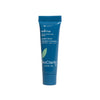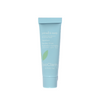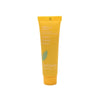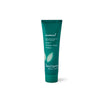What Causes Cystic Acne: The Ultimate Guide
By Abby Vinas
Types of Acne
•
3 Comments
While acne is the most common skin condition in the United States, a smaller portion of the population develops cystic acne. Due to the noticeable and quite painful breakouts that are associated with cystic acne, it can be especially devastating to those that struggle with this skin condition.
- What is cystic acne?
- Who gets cystic acne?
- Consequences of cystic acne?
- Am I making my cystic acne worse?
- Cystic acne treatment
- Cystic acne prevention
- Key Takeaways
If you think you might be suffering from cystic acne, and are wondering “what is cystic acne?”, “what causes cystic acne?”, and “how do I treat it?”, you have come to the right place. While you may feel hopeless about ever having clear skin, we have created this guide to help you gain control over your condition. While severe acne can be hard to treat, there are proven treatment options available.
As leaders in healthy, safe skincare, we have helped many people just like you overcome the endless cycle of inflamed, blemished skin. Our comprehensive cystic acne guide can help you understand severe acne so you prevent, manage, and treat your condition. Take the first step in the battle against cystic acne so you can feel and look your best.
What Is Cystic Acne?
Cystic acne is the most severe form of acne vulgaris. This painful skin condition, often just referred to as severe acne, is characterized by large, inflamed acne lesions that form deep within the skin and result in painful, large bumps visible from the surface.
While cheek, chin, and forehead acne are usually the most noticeable, it can also be present on your shoulders, chest, arms, and other areas of your body. These acne blemishes are embedded deep within the epidermis, and unlike pimples and pustules, they don’t come to a head on the surface of the skin. Along with painful, inflamed acne lesions, those with cystic acne may also exhibit numerous comedones, which can be both open or closed, and are referred to as blackheads and whiteheads, respectively.
Due to the depth and severity of cystic acne, it often results in permanent scars. In some cases, individuals may suffer from breakouts that linger for years. Many people develop cystic acne during puberty and into their early 20’s, however, the condition can flare earlier and later in life.
What Causes Cystic Acne?
Now that we’ve answered your most pressing question “what is cystic acne?”, you may be ready to jump straight to treatments but you must understand the causes of acne to effectively manage your condition. When pores become blocked by excess sebum, skin cells, and bacteria, an infection can rise up in the pores. So what causes cystic acne? It results from the most severe types of pore blockages which go deeper into the skin. Cystic acne causes vary from case to case because there are many aspects of your overall health to consider.
Determining what causes severe acne means looking at a variety of factors, including your family genetics and hereditary factors, diet, lifestyle habits, and hormonal changes that occur due to certain life events.
While many factors that contribute to the development of cystic acne, it can sometimes be difficult to be sure of the exact cause of your breakouts. However, that doesn’t mean you can’t treat it. You just need to pinpoint certain characteristics of your condition to find the best method of acne management.
Who Gets Cystic Acne?
Acne affects up to 50 million people each year in the U.S. However, severe or cystic acne is far less common — only 1% of adult females and 3% of adult males suffered from severe acne. For many women, cystic acne is the result of hormonal imbalance, meaning they’ll likely experience breakouts on or around menstruation.
Since severe cystic acne causes can be triggered by hormonal changes, it also often develops during the onset of puberty. During puberty, the level of androgen hormones produced increases significantly. When a higher amount of androgens are produced, the skin’s oil glands react by producing an excess of sebum and increasing skin cell proliferation. With more sebum and skin cells sloughing off the surface of the skin, pores can become clogged.
Even though cystic acne is rare in comparison, it’s still a prevalent issue that can have long-lasting consequences.
Clearer skin in as little as two weeks.
This 3-step routine combines the most effective (clinically-proven) acne fighting ingredients with powerful plant intelligence to leave your skin nourished, refreshed, and clear.
Learn MoreIdentifying Inflammatory Acne
Cystic acne can affect individuals in different ways. So, to properly treat your cystic acne, we must first delve a little deeper.
To get a more in-depth answer to the question “what is cystic acne”, you should understand the various factors that are at play within the condition. Cystic acne is an inflammatory type of acne caused by the rupturing of the skin cell wall. The built-up sebum, dead skin cells, and bacteria then make their way into the surrounding skin, causing inflammation. On the other hand, comedonal acne is non-inflammatory because it is closer to the skin and isn’t caused by bacteria.
As you may have guessed, inflammatory acne is, in part, characterized by swelling and redness. There are four main types of inflammatory acne, and all four may be present on the skin in cases of cystic acne. Once you determine which types of inflammatory acne you suffer from, you will be able to better narrow down which treatments can manage your specific case of cystic acne.
Papules
Papules appear on the skin as red or pink-colored bumps. These acne lesions don’t contain pus and you won’t see any visible fluids. They are generally not painful but you might notice that they are tender to the touch. Usually, papules are less than one centimeter wide, but they can vary in size.
Pustules
A pustule is similar to a papule, except for the presence of white blood cells. When the body’s immune system senses bacteria in a ruptured follicle, it sends white blood cells to the area to protect the rest of the skin. This causes pus to build up, causing them to appear yellow or white at the surface of the skin. You would probably refer to a pustule as a pimple or zit.
Nodules
A nodule is a hard acne lesion that’s embedded deep within the skin. You’ll notice that they are usually painful to the touch. At first, they can be skin-toned, but they might become red as the skin becomes more inflamed. Unfortunately, nodules can often last weeks or even months. During this time, they could even harden into deeper cysts, making them an especially unpleasant type of inflammatory acne.
Cysts
An acne cyst (sometimes referred to as "cyst acne") contains a hollow cavity or sac area in which fluid and liquid builds up. The fluids may harden, but cysts are generally softer than nodules. Cystic acne lesions are most often felt beneath the skin before they’re seen. A note of caution—since acne cysts are deep within the skin, squeezing or attempting to self-extract these lesions can actually worsen the condition, slow down the healing process, and heighten the risk of permanent, deep scarring. Instead, schedule an appointment with your dermatologist for cyst drainage.
Consequences of Cystic Acne
When asking “what is cystic acne”, what many people really want to know is what damage it can do to their skin. Without proper treatment, cystic acne can have far-reaching consequences, from your appearance to your mental health. As such, it’s vital to treat this condition as soon as possible to avoid damaging, long-term effects.
Acne Scars
Acne scars are one of the most distressing aspects of cystic acne. Severe acne cases can be seen in individuals left with deep marks and raised scars on the surface of the skin, and sometimes these marks can seem impossible to treat. Understanding the type of acne scar your skin exhibits is essential when learning ways to treat and avoid acne scarring.
Depressed Scars
Pitted acne scars are the most common type of scars left behind by cystic acne, and these scars generally sit on top of collagen-rich scar tissue. This tissue prevents the skin from repairing the deep indentation.
Boxcar Scars
Boxcar scars are characterized by an angular shape and exhibit sharp, vertical edges. Normally found on the temple or cheek, they can develop in a variety of depths. These scars closely resemble those left behind by chickenpox.
Ice Pick Scars
Ice pick scars are a common consequence of inflammatory acne breakouts, and usually, measure less than 2mm in diameter. These types of acne marks look deep, seeming to extend far into the skin.
Rolling Scars
Rolling scars are shallow and wide across the diameter and are caused by damage that has occurred under the skin. They occur when multiple bands of tissue develop in deeper structures of the skin’s surface. Unfortunately, rolling scars can become more noticeable with age.
Raised Acne Scars
Raised acne scars are less common than pitted scars, but they’re usually more noticeable and may be more difficult to treat.
Keloid Scars
These scars form when excess collagen production causes scar tissue to form in excess, even after the wound is filled in. Collagen is produced to help heal the skin damage, but when this collagen spreads beyond the wound left behind by an acne blemish, larger scars can become raised.
Keloids can form on any part of the body but tend to be found on the chest and back. Only about 10 percent of people develop keloids, and they may come from acne, other minor injuries, and even bug bites. The severity of keloid scars varies with different types of skin, but are more common in individuals with darker skin tones.Hypertrophic Scars
Hypertrophic scars are noticeably raised and may have a lumpy appearance. They are very similar to keloids but tend to be smaller and fade over time, and are much more common. They are present in all racial groups.
Hyperpigmentation
After acne heals, there may be red or dark-colored marks left behind on the skin. These are commonly confused for scars, but they’re actually what is medically referred to as macules, a result of hyperpigmentation.
Hyperpigmentation is more common among individuals of Latino, Asian, Native American, Pacific Islander, Middle Eastern, and African descent.
While there are numerous treatments and ointments available designed to heal acne scars, the invasiveness and cost of these treatment plans can vary greatly. Unfortunately, this can mean that these solutions are out of reach for many people who suffer from acne scarring.
Psychological Consequences
In addition to the lasting physical effects, acne can contribute to mental health issues, including depression and anxiety. As self and body image become more important in teen years, the visibility of severe acne blemishes and scars can result in lowered self-esteem. Not only that, but it can have a far-reaching impact, affecting various aspects of a teen’s life, such as social interactions, work, and school. In the same study, 29% of respondents said that their severe acne had a “very large effect” on their quality of life. If your teen is suffering from negative effects associated with their cystic acne, you may be interested in helping them follow the top teen skincare tips and getting them treatment as soon as possible.

In addition to seeking the assistance of a mental health professional, you can help them minimize the negative effects of acne. Helping your teen overcome cystic acne can even restore their confidence. One way to do that is by establishing a skincare routine. Our range of vegan acne treatment products are a great solution for teens because they are easy to use, gentle for all skin types, and clinically proven to actually help improve the health of their skin for a clear complexion that lasts.
Am I Making My Cystic Acne Worse?
Unfortunately, you could be worsening your cystic acne without knowing it. Since there are many cystic acne causes, there are a variety of factors involved in the frequency and prevalence of your breakouts. While these aspects don’t necessarily cause the formation of pimples, these habits have been known to worsen pre-existing skin issues for severe acne sufferers.
Medications
Certain medications can exacerbate the presence of acne, including birth control (brands that contain only progesterone), lithium, phenytoin, and other drugs. It’s important to talk to your doctor about any skin issues that arise after beginning a new medication.
Dairy
The battle rages on about the link between diet and acne. There have been multiple studies conducted, but dairy is not widely considered to be a causation of acne.
Sweat
Hot, humid conditions can encourage the production of acne. As our skin forms sweat to help combat the heat, it’s normal to want to wipe it away, but doing so with your hands may spread oils and foster bacteria that can lead to acne infection.
Stress
Many find that their acne is exacerbated during times of high stress. But does stress cause acne? Not necessarily. However, it can worsen a pre-existing acne issue. While the exact connection between stress and acne lesion increase isn’t known, scientists have conjectured that stress signals the sebaceous glands to increase oil production.
This results in more oil on the skin and inside pores, which can make it easier for acne to form. Stress can also cause people to unconsciously pick at their skin, making things worse.
Picking & Forced Popping
While it can be tempting to pop cystic acne, this can actually cause infection to spread and make your condition worse. This is how many people end up with severe scarring.
How is Cystic Acne Diagnosed?
Cystic acne can be fairly easily for your dermatologist or physician to diagnose during a visual exam because of the noticeable inflammation of the lesions. Visiting a dermatologist can also help you rule out other skin conditions that may mimic the appearance of acne, including rosacea, folliculitis, milia, and perioral dermatitis. However, if you were diagnosed with cystic acne and it doesn’t respond to initial treatment, further diagnostic testing may be needed. In these instances, physicians may perform a skin lesion culture to ensure you’re not suffering from Gram-negative folliculitis.
Cystic Acne Treatment

Now that we’ve fully answered the question “what is cystic acne?”, we can help you understand your treatment options. Cystic acne is one of the most difficult types of acne to successfully treat. As cystic pimples are found deep within the skin, often making traditional acne treatments ineffective.
In most cases, severe acne requires multiple treatment methods, your commitment to quality skincare, and most importantly, the help of a certified professional.
Oral Antibiotics
Many dermatologists and doctors will prescribe oral antibiotics as the first method of defense when treating cystic acne. However, antibiotics are only recommended for short-term use, because the bacteria can become resistant to the medication. There are noted side effects with oral antibiotic usage for the treatment of acne, including:
- Rashes due to allergies
- Gastrointestinal issues
- Sun sensitivity
- Thrush
Most often, doctors recommend that topical creams and products be used in conjunction with oral antibiotics for ultimate effectiveness.
Steroid Injections
If you have not seen improvement in your cystic acne, some dermatologists will inject corticosteroid to reduce inflammation and prevent scarring with notable effects in just a few hours.
While it might sound like a simple solution to your skin problems, it’s important to understand that cortisone shots don’t treat bacteria present in acne lesions, they simply improve the symptoms associated with inflammation. This makes it essential to use other treatment in conjunction with the shots to treat the actual infection present.
Photodynamic Therapy (PDT)
In recent years, Photodynamic Therapy has become a popular route for the treatment of cystic acne. During this procedure, photosensitizing cream is applied topically then a controlled red or blue LED light is pulsed on top of the area. This process is meant to shrink down the sebaceous glands, reducing the amount of oil that sits in the pores and killing the bacteria inside, effectively minimizing cystic acne lesions.
However, this treatment comes with a hefty price tag, and requires multiple sessions over the course of months before true progress is made.
Isotretinoin
Isotretinoin offers hope to those who have found no success with previous treatments. Isotretinoin is a powerful oral medication derived from vitamin A that changes the shape of sebaceous glands, effectively stopping the flow of oil. This decrease in sebum production can result in lowered levels of bacteria, effectively cutting off infection. Because it immediately changes the glands within your skin, positive results may show up immediately, and in some cases, may be long-lasting.

Known commonly by brand names like Accutane®, which was pulled from shelves in 2009, isotretinoin is highly effective but generally used as a last resort because it is associated with serious and sometimes permanent side effects that must be considered prior to beginning this type of treatment.
These side effects can include:
- Nose bleeds
- Liver function damage
- Migraines
- Dry skin
- Hair loss
- Risk to a fetus during pregnancy
- Mood swings
- Violent behavior
- Depression
- Suicidal thoughts
While acne may clear up within the first few weeks of using isotretinoin, it can come back. In cases of recurrence, doctors may prescribe another regiment of the drug, or switch to a different type of treatment.
Isolaz
Isolaz is a treatment that uses a vacuum device to cleanse the pores by extracting excess oil. A broadband light is then used to destroy P. acnes bacteria on the skin and reduce the activity of the oil gland. The Isolaz is an FDA-approved laser that can remove the debris found deep in the pore, or bring it closer to the surface of the skin to enable safe extraction. The treatment is virtually painless, but very costly, and it can take many sessions before results are visible.
Cyst Drainage
If your cysts remain large and inflamed and are causing a great deal of pain, you can choose to have a dermatologist drain the contents of the infected pore. During this procedure, a small incision is made and cysts are gently drained of all the built-up fluid inside. The procedure is quick and usually painless, but cysts may recur even after being completely drained.
Birth Control Pills
Contraceptives have become a common and popular way to help control cystic acne. A form of hormonal therapy, birth control pills containing both progesterone and estrogen can result in a decreased amount of androgens in the body. The fewer androgens produced, the less sebum secreted. With sebum production under control, the likelihood and severity of breakouts are lessened.
Birth control pills that only contain progesterone should be avoided, as we discussed earlier, these can often make acne worse. Contraceptives also come with their fair share of side effects including:
- Blood clots
- Weight gain
- Nausea
- Spotting
- Mood changes
It’s important to note that birth control pills should only be used for acne treatment when contraceptives are also desired.
Spironolactone
Another form of hormonal therapy, some dermatologists prescribe their patients spironolactone, an oral drug originally created to treat hypertension and cardiovascular issues. This drug is also an androgen blocker which reduces sebum production and can result in clearer skin. It can take a while for its effects to be seen, generally three months or more. According to the American Academy of Dermatology, it can achieve a 50-100% reduction in acne. However, there are some things to keep in mind before beginning spironolactone:
- Men should not use this drug due to side effects such as gynecomastia (the development of breast tissue).
- Spironolactone should be taken in combination with birth control if you can get pregnant.
- Individuals who have suffered a stroke or blood clot are the exception and should not take birth control with spironolactone.
It is also a diuretic and can cause a buildup of excess potassium in the body so it’s essential to get consistent blood work done while on spironolactone.

Cystic Acne Prevention
While self-care can’t control cystic acne breakouts alone, it is a critical component of your treatment. Proper self-care can help keep severe acne under control and alleviate painful symptoms.
Wash Your Face
This may seem obvious but washing your face is one of the most important things you can do to manage your acne, above and beyond treatment, of course. For the best results, you should:
- Wash your face twice daily
- Practice proper face-washing technique
- Avoid harsh chemicals and abrasive soaps
- Use lukewarm water
In addition to washing your face at the beginning of both your morning routine and night routine, it is recommended that you also take special precautions when engaging in sweat-inducing activities or working out. Completely take off your makeup with an oil-free towelette and use a fresh, clean towel to gently pat away sweat.
Establish a Skincare Routine
Skincare isn’t just about washing your face. You need a tiered system of products to clean, treat, and restore your skin. While washing and treating severe acne breakouts is important, don’t forget to moisturize (our hydrating mask is nourishing for all skin types).
It’s essential to remain consistent with your skincare routine, using products designed to fight bacteria and keep the pores cleaned out to avoid further infection. BioClarity's skincare line uses Floralux® to help nourish the skin using plant power. To ensure your skincare routine is giving you the best chance in the battle against acne, use our three-step skincare routines. Our naturally-derived products are safe, clinically proven, and cruelty-free.
There are also many tips for healthy skin and guides to clear skin out there but you should be cautious about simply following the advice you find online.
Key Takeaways
- What is cystic acne? - Cystic acne is the most painful and severe form of acne, and the hardest to treat.
- What causes cystic acne? - Cystic acne has many contributing factors but hormonal changes are one of the leading causes of cystic acne.
- Why is important to seek treatment early on? - Untreated cystic acne can result in permanent scarring and emotional damage.
- Where does it form? Cystic acne is most commonly found on the face, but can also be observed on the chest, back, and arms.
- What are the benefits of cystic acne treatment? - Treating severe acne can help you achieve a clearer complexion, prevent new scars, and improve your self-confidence.
- Are acne scars preventable? - Acne scars come in a variety of shapes and forms, but can be prevented or reduced with early treatment.
- Why is important to see a doctor for cystic acne treatment? - Some acne treatments can have severe side effects, so it’s important to consult with a doctor or licensed dermatologist.

Abby Vinas
Abby Vinas has long been an active member of the holistic health community, advocating in favor of its benefits to both our physical and emotional well-being. Her commitment to leading a healthy lifestyle has made her an authority on self-care practices. Abby is passionate about fitness, nutrition, and proper skincare, and is also an avid lover of avocado toast and dog-petting.













This is such a great article on cystic acne! I myself have been suffering from cystic acne since I was a teenager, and there really is no one proven method…you basically have to try everything and anything and see what works for you.
I like your advice tnx
I like your advice tnx